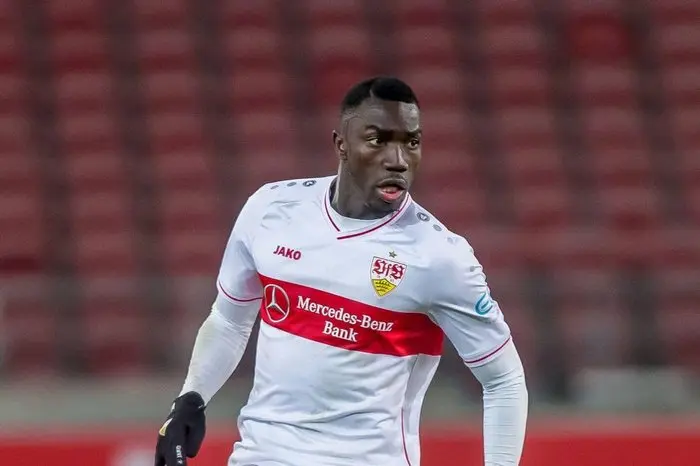For migrants, the journey does not stop upon arrival in Europe. To pursue the dreams and expectations with which they set out is a challenge in itself. As seen with l’homme de Barbés, the reality of what migrant athletes find in Europe does not match the “myth”. Sports can be very unforgiving in this aspect, with only a select few finding success at the professional level. It is common for players to get cut from the academy without help transitioning to life after football. In 2021, 18-year-old Jeremy Wisten committed suicide after being cut from the Manchester City academy (Sky). With very few institutions set in place to help players transition to a life without professional soccer, this can be a situation that is made even worse for a migrant player.
In Le ventre de l’Atlantique, we get a depiction of what that can be like with Moussa’s story. Moussa was a player from the same village as Madicke was recruited to play in France by a professional coach. He makes the trip, however, he remains undocumented. While being well-fed and having a place to sleep, he does not receive a salary. When he is eventually cut from the team, he is forced to work on a ship along with other undocumented workers. He is caught without papers on his day off, and instead of being deported back to Senegal, he commits suicide by jumping into the ocean. Unfortunately, stories of depression, suicide, and the exploitation of migrant athletes are not uncommon.
Silas Mvumpa, a current soccer player for Stuggart in Germany’s first division, was manipulated by his former agent in Paris to take up a fake identity, Silas Wamangituka, under the threat that he would never be able to go back to his home country of the Democratic Republic of Congo if he ever left Belgium, where he was playing at the time. The agent would take portions of his salary, threatening to out him if he ever went public (The Athletic). It was only until 5 years later and under a new agent that Silas felt that he was safe enough to tell his story, warning migrant athletes of those that may try to take advantage of their migrant status. So while sports can provide a path upward in social mobility, the lack of proper institutions to support either migrants or young athletes can make the migration process much harder.

While potentially exacerbating the traumas associated with migration to a new country, sports can provide a means of economic and social mobility for migrant athletes. In Sine Agergaard, Vera Lucia Botelho, and Nina Clara Tiesler’s book, Women, Soccer and Transnational Migration, they identify three important typologies of migrant athletes: transnational settlers, transnational sojourners, and transnational mobile. While all three types saw sporting ambition and economic gain as motives for migration, there are some key differences across the three types. Transnational settlers focus on building a home in the host country, while transnational sojourners focus mainly on economic gain. Transnational mobiles focus on the geographic and social mobility that comes with the new host country while maintaining ties to the country of origin. While this book focused mainly on women’s soccer, these are typologies that can be applied to all migrant athletes.
Furthermore, the desire for increased economic gain and social mobility associated with a sports career seen in these typologies can be applied to second-generation migrants as well. One such example is Kylian Mbappe. Born in France to a Cameroonian father and an Algerian mother (a former handball player), the 23-year-old has become one of the most prominent figures in world soccer today. Kylian grew up in Bondy, one of the many suburbs outside of Paris. These banlieues, on the margins of Parisian life, are the home to many migrant families, many of whom are struggling with poverty. It is also in the banlieues of Paris that one of the world’s greatest scouting networks exists. More scouts are “in and around Paris than anywhere in the world, apart from São Paulo,” youths of 11 or 12 years of age are recruited to play for some of the best academies in the world (New York Times). It was there where Mbappe’s and many other first- and second-generation migrants’ success stories started.
Breaking into the sports world can be an extremely difficult process due to the lack of institutions in place to support athletes, especially first- and second-generation migrants who may already be dealing with struggles associated with the migration process. However, those who can find success are allowed to gain greater economic stability and social mobility.